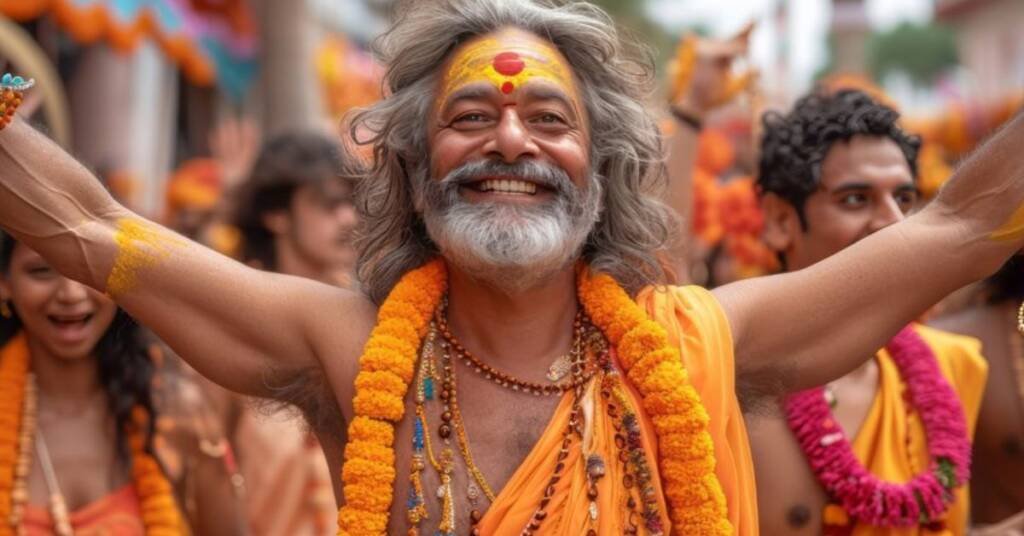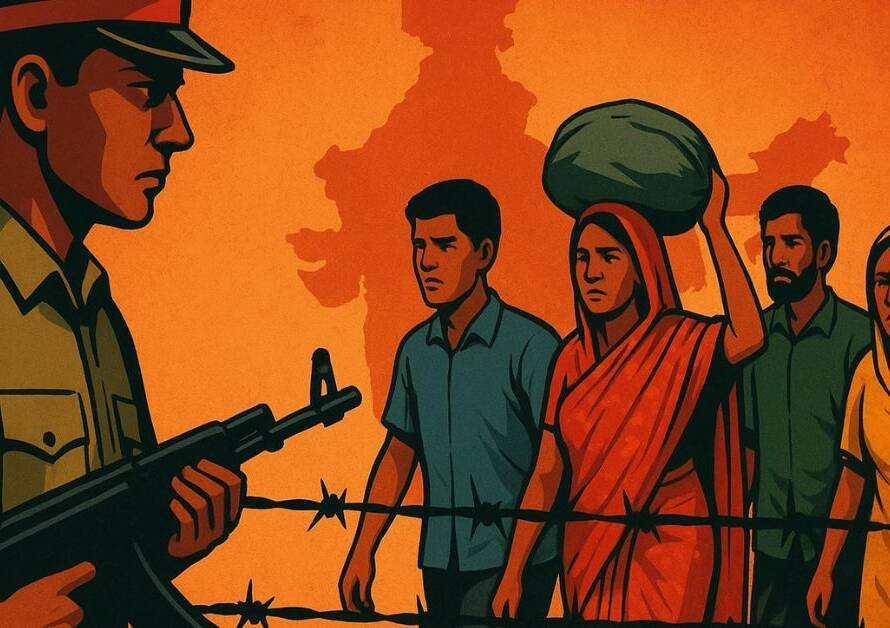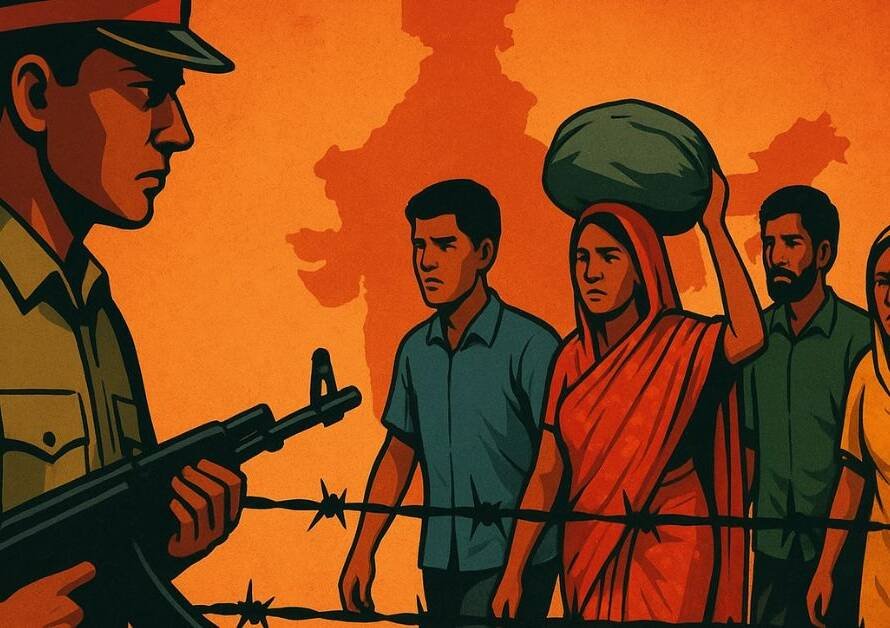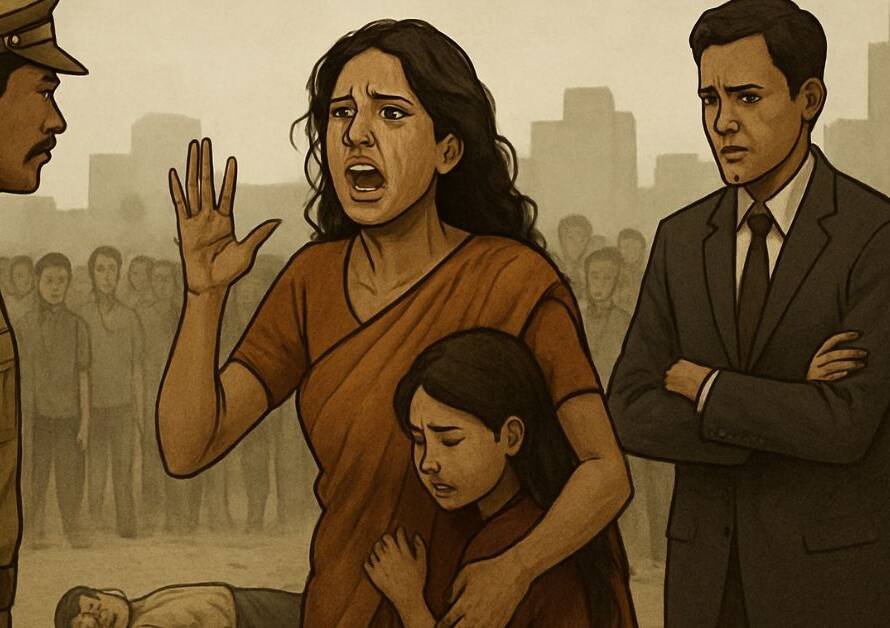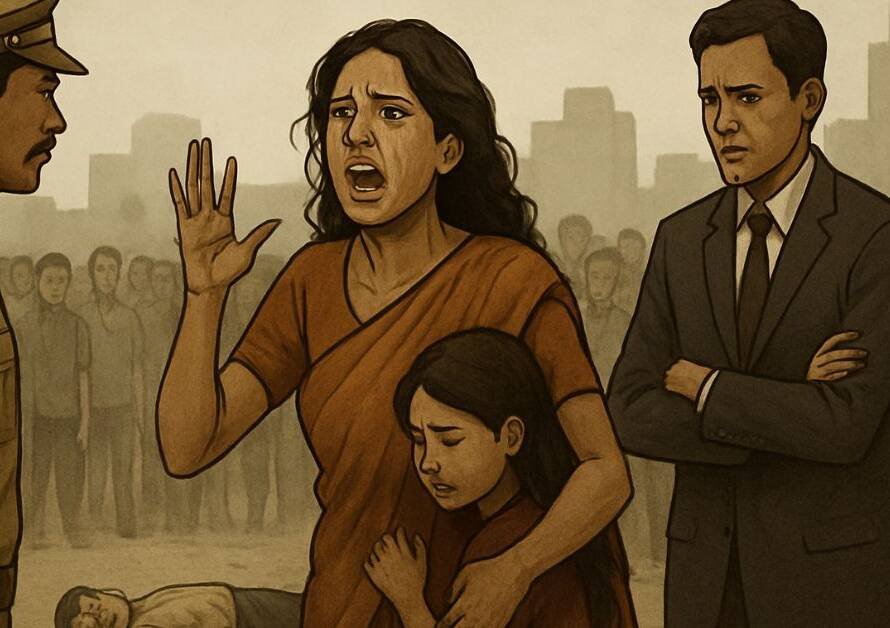In India, religious gurus and saints have historically played a crucial role in society. They are seen as spiritual leaders, guiding people on moral and ethical values while strengthening their faith in religion. However, in recent decades, certain issues have emerged in the behavior and approach of our religious leaders, which need to be addressed seriously. Let’s discuss these aspects:
Spiritual Focus vs. Social Leadership:
Most of our religious gurus today seem to focus only on individual spirituality and the quest for personal salvation. They often talk about yoga, meditation, and personal well-being, but remain silent on social and political challenges facing the Hindu community. When there are attacks on Hinduism or threats from radical elements, many of our religious leaders choose to remain neutral, arguing that religion should remain separate from politics.
Example: During the long struggle for the construction of the Ram Temple in Ayodhya, several prominent saints initially hesitated to support the cause. It was only after immense public pressure that they started showing their support. Similarly, in recent cases of anti-Hindu violence, the response from many religious leaders has been indifferent, causing disappointment among the community.
Political Alignment and Division:
The political inclinations of our religious gurus are also creating divisions within the Hindu community. Many gurus and saints are aligned with different political ideologies. Some support Congress, while others back BJP or different regional parties. This leads to a lack of unity among Hindus, causing ideological conflicts within the community.
Example: During the 2019 Lok Sabha elections, some influential saints openly campaigned for Congress, while others endorsed BJP. This created confusion and division among Hindus. When religious leaders change their support based on political affiliations, it generates ideological rifts among their followers, weakening the community as a whole.
Commercialization and Materialism in Religion:
Several religious leaders have turned their ashrams and monasteries into business enterprises. Yoga, meditation, and discourses are being marketed as commercial products rather than spiritual teachings. Ashrams have become more like business centers, where economic gains often overshadow the true purpose of spreading spiritual values.
Example: Many large religious institutions today control vast amounts of wealth and property, and their discourses often focus on material well-being rather than the protection of religion. As a result, there is a growing perception within the Hindu community that the priority of these religious leaders is no longer the welfare of society or the defense of the faith, but rather self-promotion and financial gains.
Indifference Towards Hindu Unity:
Despite increasing fragmentation within the Hindu community and rising influence of radical forces, many of our religious leaders fail to emphasize the importance of Hindu unity. They do not take active steps to resolve internal differences and promote a coordinated effort for the collective good of the community.
Example: There is minimal effort from the religious leaders to engage in dialogue with Sikh, Jain, and Buddhist communities and integrate them into the broader spectrum of Hindutva. Instead, conflicts often arise between different sects of Hinduism itself, giving an opportunity for radical forces to exploit these divisions and further weaken Hindu society.
Silence on Religious Conversion and Radical Threats:
Forced religious conversions and the growing threat of Islamic radicalism are serious issues in India. Yet, many of our religious gurus remain silent on these matters, perhaps because they wish to avoid controversy.
Example: In states like West Bengal, Kerala, and others, there have been numerous cases of forced conversions by Christian missionaries and Islamic extremists. Despite this, very few religious leaders speak out against these issues or actively work to mobilize the Hindu community for its protection.
Conclusion:
The current approach of our religious leaders indicates several challenges for both Hindu society and Hindutva. Unless they actively address the real problems of society and work towards promoting Hindu unity, the Hindu community will continue to struggle against both external and internal threats.
Religious leaders should not limit themselves to discussions of personal salvation alone but should also speak out on social and political issues. They need to make their followers aware of the need to protect their religion, culture, and society. Only then can they truly be considered as guiding lights of the faith, capable of uniting the Hindu community and leading it towards a stronger future.
Examples, Case Studies, and Next Steps
To understand the role and impact of religious leaders on Hindu society and Hindutva, we need to examine specific instances and provide actionable steps for the future. Here are some relevant examples and case studies that highlight both the challenges and opportunities in this context:
Example: The Ram Mandir Movement
Case Study: The Ram Mandir movement is one of the most significant events in modern Hindu history. Initially, many prominent religious leaders were hesitant to openly support the cause due to fear of political backlash and social unrest. However, as public sentiment grew stronger, several gurus and saints were compelled to join the movement. The Vishwa Hindu Parishad (VHP) and Rashtriya Swayamsevak Sangh (RSS) played key roles, but broader support from the spiritual community was inconsistent.
Analysis: The hesitation of many religious leaders to take a stand on this issue showed a gap between the expectations of the Hindu community and the actions of its spiritual leaders. Their reluctance highlighted a disconnect between spiritual guidance and social activism.
Next Steps:
Religious leaders must recognize the importance of being vocal on issues that have deep cultural and religious significance for Hindus.
Creating a unified council of major Hindu saints and gurus to discuss and take collective action on such critical matters would be beneficial.
Example: Religious Conversion in Tribal Areas
Case Study: In several parts of India, particularly in states like Jharkhand, Odisha, and Chhattisgarh, Christian missionaries have been actively converting tribal Hindus through various incentives and social services. Despite clear evidence of forced or incentivized conversions, many Hindu religious leaders have chosen to remain silent or have not actively campaigned against it. Organizations like the Vanvasi Kalyan Ashram have been working to counter this, but the involvement of influential religious gurus has been minimal.
Analysis: The silence of prominent religious leaders on forced conversions has led to a feeling of abandonment among tribal communities, making them more vulnerable to conversion. The lack of a strong, united response has also emboldened missionary activities.
Next Steps:
Religious leaders should partner with grassroots organizations to conduct outreach programs in vulnerable communities, providing social and spiritual support.
A coordinated campaign to raise awareness about the cultural impact of religious conversion should be launched by prominent gurus.
Example: Sikh-Hindu Relations and Interfaith Unity
Case Study: The relationship between Sikh and Hindu communities has seen both unity and tension over the years. The historical events involving the martyrdom of Sikh gurus by Mughal rulers were significant moments of shared struggle. However, political movements like the Khalistan separatist movement created rifts, leading to mutual distrust. Despite this, there have been positive instances, such as the communal harmony shown during the 2020 Farmers’ Protest, where Hindu and Sikh religious leaders came together to support the farmers.
Analysis: While there is a shared cultural heritage between Sikhs and Hindus, political factors have often been exploited to create divisions. Religious leaders from both communities have not always taken proactive steps to heal these rifts and promote unity.
Next Steps:
Regular interfaith dialogues between Sikh and Hindu religious leaders should be organized to address historical grievances and foster mutual respect.
Joint community service projects, such as langar (free kitchen) programs and disaster relief efforts, can be initiated to strengthen bonds.
Example: The Sabarimala Temple Issue
Case Study: The Supreme Court’s 2018 decision to allow women of all ages into the Sabarimala Temple sparked widespread protests among Hindu devotees. However, many prominent religious leaders either remained silent or supported the court’s decision, which was seen as a betrayal by the traditional devotees who believed in upholding the temple’s customs.
Analysis: The silence or compliance of religious leaders with the court’s decision without understanding the cultural sentiments of the devotees created a divide between the spiritual leadership and the community. This incident underscored the need for religious leaders to be more in tune with the beliefs and traditions of their followers.
Next Steps:
Religious leaders should actively engage with their communities to understand their concerns and traditions before making public statements on sensitive issues.
A unified voice from the spiritual community, reflecting the values and beliefs of their followers, should be presented in legal and political forums.
Example: Silence on Islamic Radicalism and Jihadi Threats
Case Study: In several instances, such as the targeted killings of Hindus in Kashmir and attacks in states like Kerala and West Bengal, there has been a noticeable silence from many Hindu religious leaders. While political figures and activists have spoken out, the lack of a strong response from the spiritual community has led to frustration among ordinary Hindus who expect their leaders to be vocal defenders of their rights.
Analysis: The reluctance of religious leaders to speak out against Islamic radicalism and jihadi threats is often attributed to a desire to maintain secular or non-controversial stances. However, this silence has weakened the Hindu community’s morale and resolve to fight against these threats.
Next Steps:
Religious leaders must take a firm stand against any form of violence or extremism, regardless of the religious affiliation of the perpetrators.
A nationwide awareness campaign led by respected gurus and saints should be initiated to educate Hindus about the threats posed by radical elements and encourage collective action.
Next Steps for Hindu Religious Leadership
Formation of a United Hindu Council: Create an umbrella organization of major Hindu religious leaders to discuss pressing issues and provide a unified response. This council should serve as a common platform for decision-making and advocacy on matters affecting the Hindu community.
Increased Social Activism: Religious leaders must go beyond spiritual teachings and engage actively in social issues affecting Hindus, such as forced conversions, cultural erosion, and discrimination.
Community Outreach Programs: Establish regular outreach initiatives to connect with marginalized sections of the Hindu society, such as tribals and Dalits, to address their concerns and prevent religious conversions.
Promotion of Hindu Unity: Religious leaders should prioritize Hindu unity over sectarian differences and work towards resolving internal conflicts among different Hindu sects.
Strategic Political Engagement: While maintaining a non-partisan stance, religious leaders should engage with political figures to advocate for policies that protect Hindu interests and cultural heritage.
Educational Initiatives: Launch educational campaigns to raise awareness among Hindus about their history, culture, and the current challenges facing the community. This can be achieved through seminars, literature, and online content.
Response to Anti-Hindu Narratives: Develop a clear and vocal stance against any narratives that target or demean Hinduism and its practices. Religious leaders should use their platforms to counter misinformation and promote a positive image of the faith.
By taking these proactive steps, religious leaders can play a transformative role in uniting the Hindu community, protecting its cultural identity, and ensuring its future security and prosperity.


